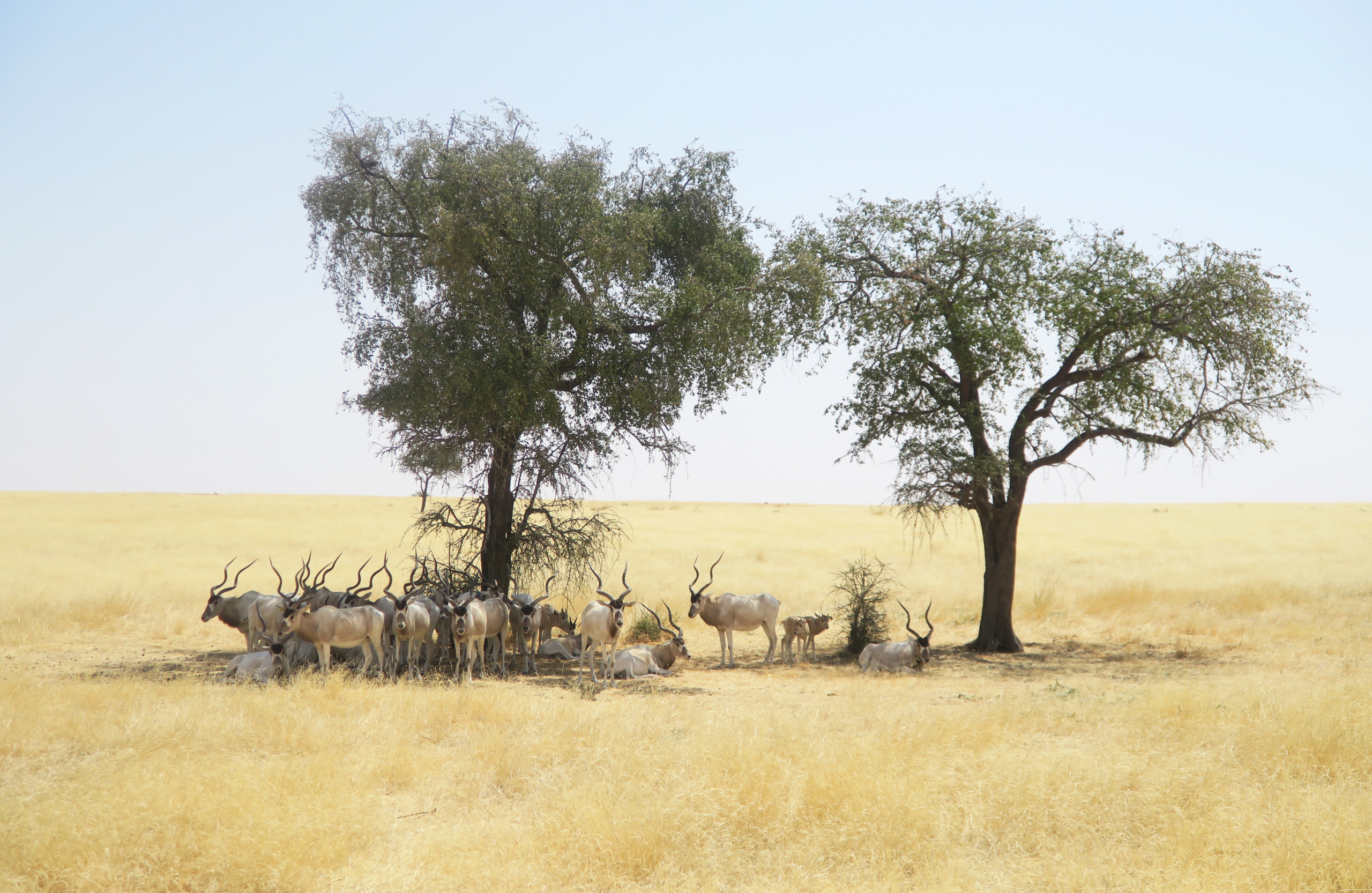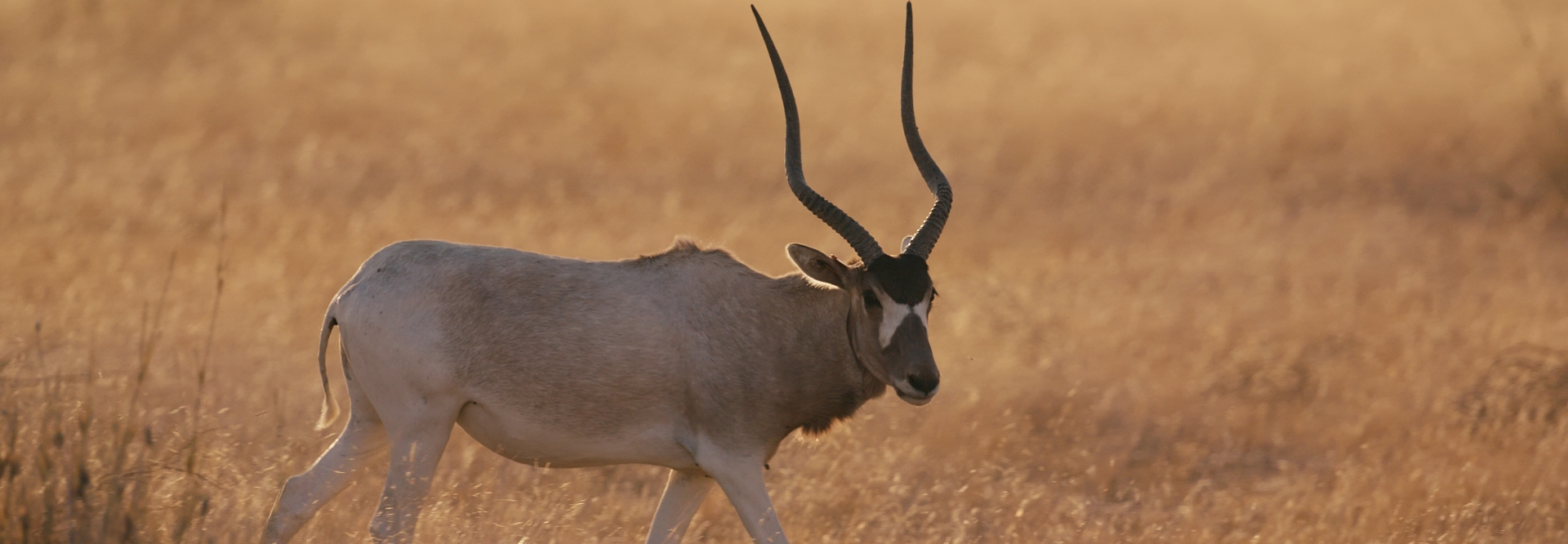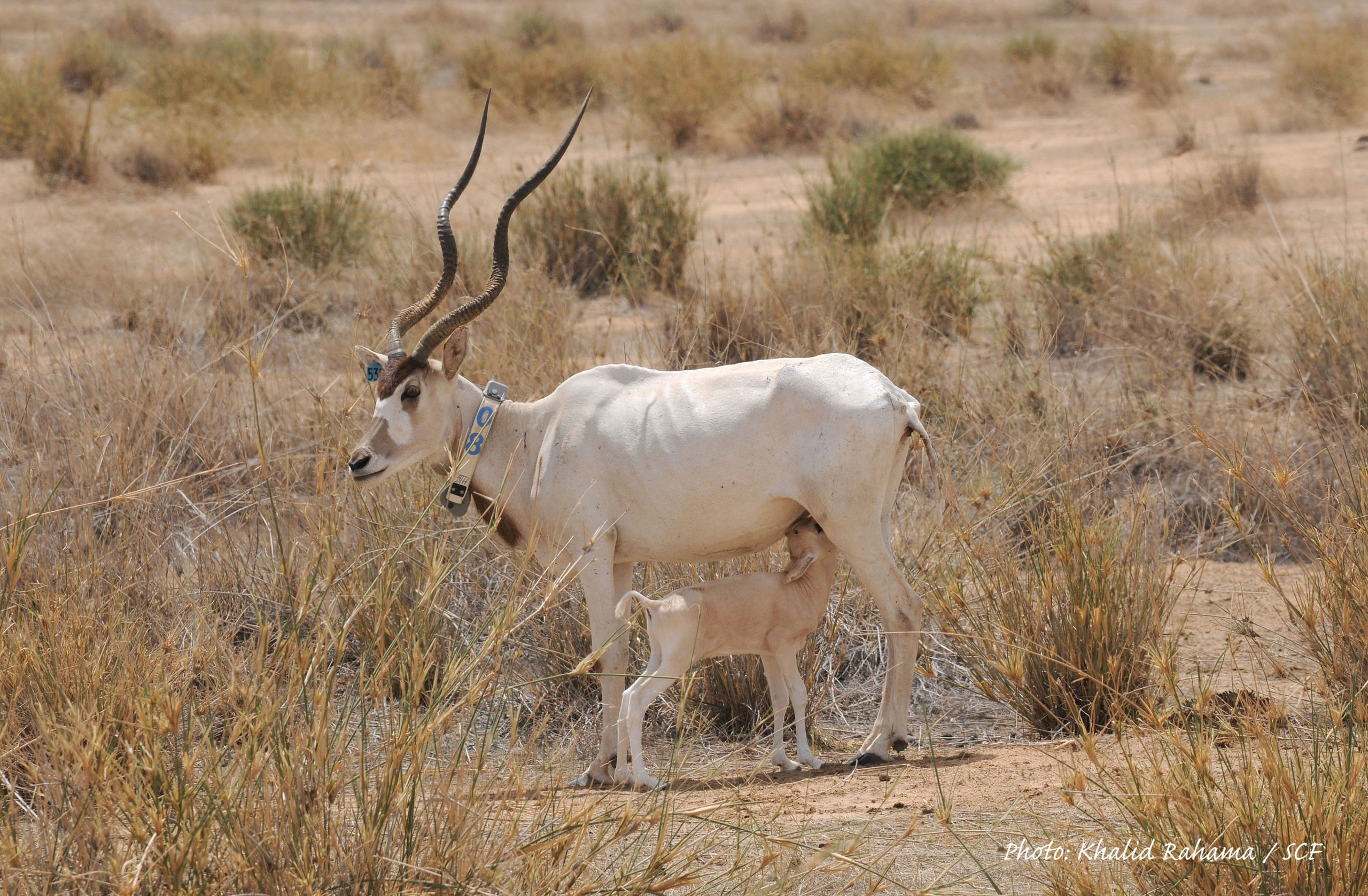
Addax
The addax antelope is one of the rarest and most endangered species on earth. Illegal hunting has brought addax to the brink of extinction, with less than 100 alive in the wild in Chad and Niger.
The addax is a relatively short-legged, stocky antelope (95-105 kg) with long corkscrew horns, strong facial markings and distinctive mop of dark brown hair. Its coat color changes from bright, matt white in the summer, hot season months, to darker grey in winter. The addax is a highly adapted desert-dweller: pale coloration and large hooves are adaptations to hot sandy habitat. It is a nomadic species, exploiting ephemeral annual pastures and more permanent perennial grazing.
The addax forms small herds of up to a dozen individuals, although larger groupings do occur in areas of favorable grazing or during seasonal movements to new pasture. The prime addax habitat consists of sandy desert with dune fields and firmer sand sheets.
ID card
Scientific name:
Addax nasomaculatus
IUCN Red list status :
Critically endangered
How many left in the wild:
Fewer than 100 individuals.
Geographic distribution:
Initially, throughout all Saharan nations, from Mauritania to Sudan and Egypt. Currently, restricted to two areas in western Niger and central Chad, where the species has been reintroduced.

Threats and challenges

Once widespread across North Africa, the addax has been largely extirpated since the mid-1800s. Hunting, with the advent of modern weapons and transport, is the major threat, especially since civil strife and accompanying lack of security prevents effective field protection. Although highly adapted to hyper-arid conditions, drought, and desertification are known to cause them significant periodic die-offs. Since 2020, when addax were reintroduced into the Ouadi Rimé-Ouadi Achim Faunal Reserve in Chad, addax numbers have started to grow. Continued efforts in Chad and elsewhere are needed to head off extinction.



